Behind the masks on everyone’s face, you can tell it’s all smiles as a couple of dozen people make their way up the stairs at Covenant Presbyterian Church and onto the dance floor. After a year and a half practicing either in a parking lot, where the pavement makes it hard to dance, or on Zoom, where it is hard to follow the instructor, they are ready to tear up the dance floor of this unassuming church.
“It’s about fellowship for the Church,” said the class instructor, Darlene Masamori (everyone calls her Dar) as her students warm up by dancing in perfect synchrony.
The class has been going on for years and usually draws a consistent group of 25 to 40 people – both parishioners and other community members – every Saturday. But it isn’t just about coming together to break a sweat and have fun. “Every dollar goes back to the food pantry,” explained Dar referring to the food pantry Covenant Presbyterian has been running downstairs for the past 15 years.
People Shouldn’t be Struggling
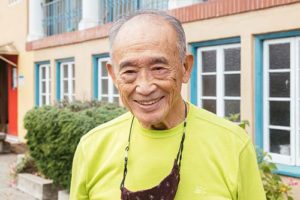 Covenant Presbyterian sits at the corner of 14th Avenue and Taraval Street and is deeply embedded in San Francisco’s Sunset District.
Covenant Presbyterian sits at the corner of 14th Avenue and Taraval Street and is deeply embedded in San Francisco’s Sunset District.
“We decided to do a food pantry because the food bank asked for a pantry in this area,” shared pantry coordinator Dave Lew, reflecting on when the pantry first opened 15 years ago. “We started very small and we learned on the job.”
It shows. Even after just three weeks since the Church reopened its pantry due to a lack of space to safely operate during COVID-19, the pantry is a well-oiled machine. Participants – who come from all over the neighborhood, not just the pews of this church – only wait a few minutes before entering the pantry, receiving a bag of groceries and heading out. While the pantry is still pre-bagging groceries, knowing people may not want everything in their bag, they set up a swap table outside, for participants to leave behind items they may not want for others who can use them.
“This is all about feeding the community and helping people who are hungry and shouldn’t be struggling just because it’s expensive to live in the city,” shared Harvey Louie, another pantry coordinator.
A Gradual Reopening
 By 10:15 – just as dancers are making their way upstairs – volunteers are downstairs cleaning up the food pantry. Week three after a more than year-long hiatus everyone is excited to be back.
By 10:15 – just as dancers are making their way upstairs – volunteers are downstairs cleaning up the food pantry. Week three after a more than year-long hiatus everyone is excited to be back.
“We have a good time doing this and miss each other. So, we were excited,” said Dave. But right now, “we have to keep the number of volunteers down because we don’t have that many recipients.”
The rhythm of life shifted significantly during the time of COVID. While the volunteers (and dancers) have come back to Covenant Presbyterian in full force, many former participants have since found other avenues to get food, like Home Delivered Groceries or other pantries. With just 30 of the 100 people they served a year ago, reopening has been slow.
But pantry coordinators aren’t discouraged. They are working with the Food Bank to determine who is receiving delivery, who is going to other pantries, and how they can conduct outreach to others in the community who may need support. Each week they see a few more people.
A Good Retirement Gig
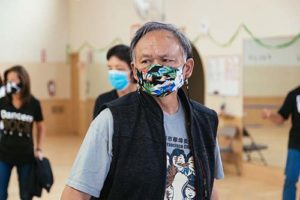 Just like the dance class, the pantry draws a loyal following of volunteers. Ranging in age from teenagers to over 90-year-olds, many have been coming since the pantry first opened its doors 15 years ago.
Just like the dance class, the pantry draws a loyal following of volunteers. Ranging in age from teenagers to over 90-year-olds, many have been coming since the pantry first opened its doors 15 years ago.
One such volunteer, Warren Lew, started while working at a local grocery store. At that time, he’d drop off donated or extra food from the store during his lunch hour. When he retired, he started volunteering weekly. He has since become a one-man welcome crew, standing outside in the thick fog to greet participants as they enter.
While he’s glad to be back, he misses the old participants. “It was a very wonderful group of people, the clients before, we had a little chitchat with them.”
For Warren, who is not a member of the church, this has also been a great way to give back to the community. “I grew up in Chinatown, but we moved out here a few years back,” shared Warren. “I’m giving back to the neighbors in San Francisco.”
With that, it’s time for dance class and Warren has no intention of missing it. Just like he recruited his friends to volunteer, he tries to rope in anyone who will listen to come upstairs and join in the fun.
+++
Support Covenant Presbyterian Church’s food pantry by signing up for line dancing: http://www.covenantpcsf.org/Ministries/linedancing.php.


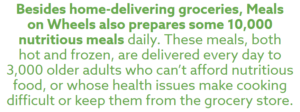
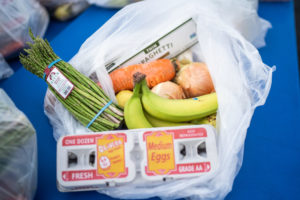 Partners like Meals on Wheels, as well as our own
Partners like Meals on Wheels, as well as our own 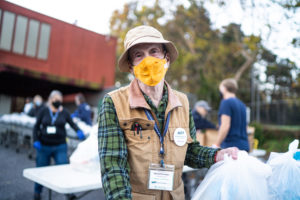
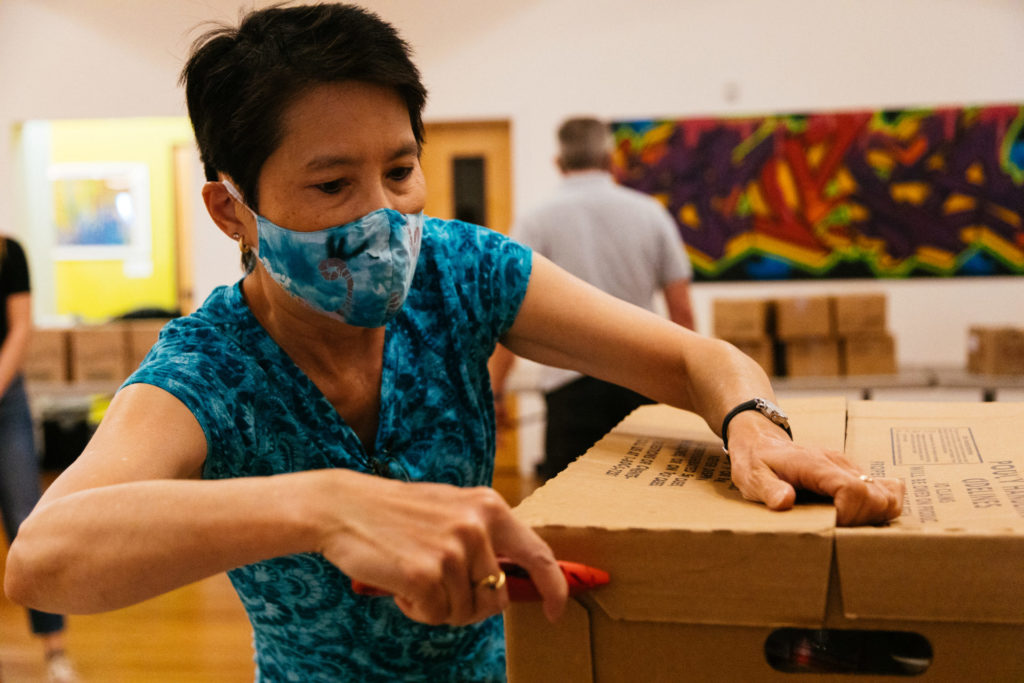
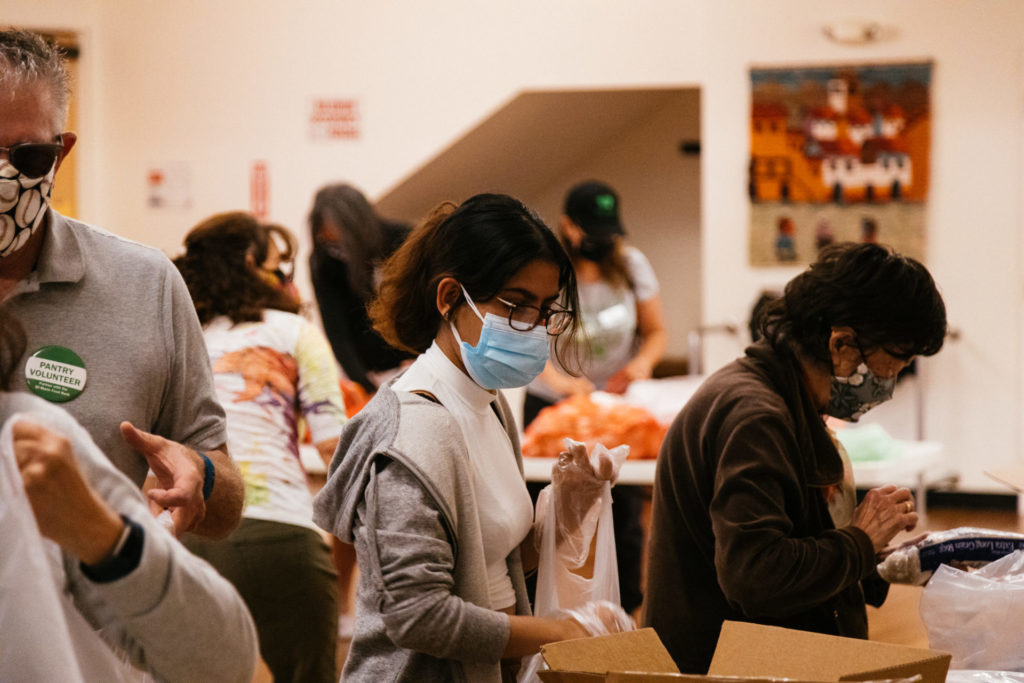
 Covenant Presbyterian sits at the corner of 14th Avenue and Taraval Street and is deeply embedded in San Francisco’s Sunset District.
Covenant Presbyterian sits at the corner of 14th Avenue and Taraval Street and is deeply embedded in San Francisco’s Sunset District. By 10:15 – just as dancers are making their way upstairs – volunteers are downstairs cleaning up the food pantry. Week three after a more than year-long hiatus everyone is excited to be back.
By 10:15 – just as dancers are making their way upstairs – volunteers are downstairs cleaning up the food pantry. Week three after a more than year-long hiatus everyone is excited to be back. Just like the dance class, the pantry draws a loyal following of volunteers. Ranging in age from teenagers to over 90-year-olds, many have been coming since the pantry first opened its doors 15 years ago.
Just like the dance class, the pantry draws a loyal following of volunteers. Ranging in age from teenagers to over 90-year-olds, many have been coming since the pantry first opened its doors 15 years ago.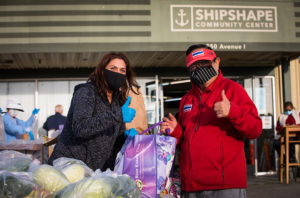 When you
When you 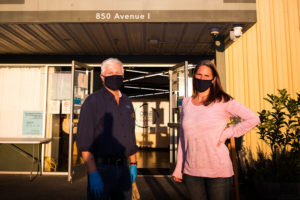 Treasure Island didn’t even have a grocery store until
Treasure Island didn’t even have a grocery store until 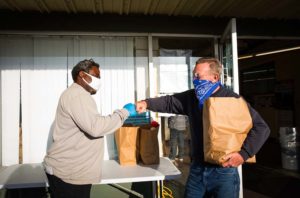 Dave, a participant for over ten years, previously worked in landscaping and was barely getting by
Dave, a participant for over ten years, previously worked in landscaping and was barely getting by
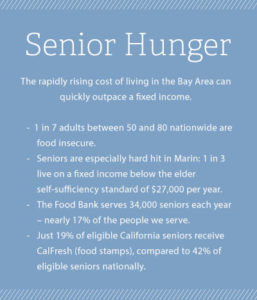 We first met Phillis (89) and Lee (81) in a line of cars waiting for groceries at the San Geronimo Valley Community Center’s
We first met Phillis (89) and Lee (81) in a line of cars waiting for groceries at the San Geronimo Valley Community Center’s 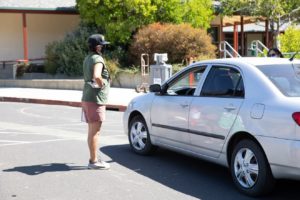

Share